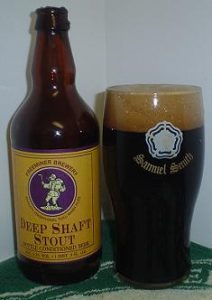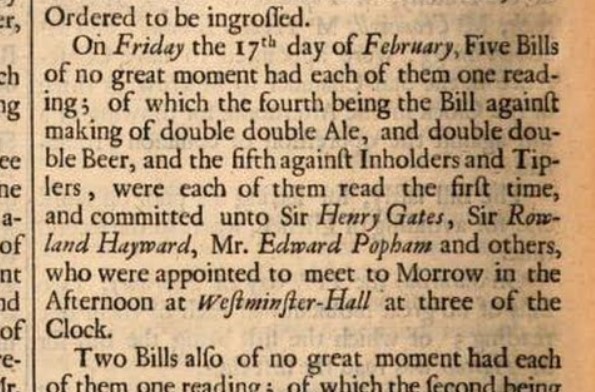 It’s now April so I think we may be well into the third week of the kids at home and limited public travel. The working life of a municipality has been fairly breakneck but we are all in this together. Not much time for either the beer or the blog… which puts a bit of a damper on beer blogging. But, as with last week, beer has again be delivered – this time from our own and excellent Stone City Ales where the staff have been heroes* – so let’s see what we can find, shall we?
It’s now April so I think we may be well into the third week of the kids at home and limited public travel. The working life of a municipality has been fairly breakneck but we are all in this together. Not much time for either the beer or the blog… which puts a bit of a damper on beer blogging. But, as with last week, beer has again be delivered – this time from our own and excellent Stone City Ales where the staff have been heroes* – so let’s see what we can find, shall we?
There are a lot of brave positive statements being made in the beer trade out there, this sort of thing found in the spam filter included:
With the number of breweries, tasting rooms, restaurants and bars closed across the country, we want to remind you that retailers such as grocery stores and bottles shops currently remain a viable way to shop for beverages while practicing social distancing. We also encourage the use of online delivery services as a responsible option in those states where available.
This is good but, at some point, also unnecessary for every point in the supply chain to issue. We are probably at that point. The messaging now needs to be stay in place and see you at the other end when the shift in the industry can be reassessed. Me, I hope this new home delivery in Ontario becomes a norm.
On Wednesday, Jordan posted a piece on how the virus and staying in place was affecting one of the less unloved sectors in the beer trade, contract brewers:
Contract Brewing is a fraught subject, but preserving the companies that are doing it has an upside in the face of this 12 week lockdown that the city of Toronto has imposed. There are a number of existing companies that depend on the contracts to fill their volume. Junction Brewing produces both Paniza and True History. Storyteller is produced at Brunswick in Toronto. If those contracting companies fail, there is a knock on effect which causes a decrease in volume at those larger facilities.
A wee bit of brewing history was discussed last weekend when reports came out of a stash of Victorian era beer found in a UK archaeological dig at a former site of Tetley’s Brewery:
Buried treasure isn’t always the stereotypical chest of gold coins: In the case of a recent British archaeological dig, it turned out to be an enormous stash of beer. Last month, while digging on the site of the former Tetley’s Brewery, in the Northern English city of Leeds, archaeologists from the West Yorkshire Archaeological Services (WYAS) discovered a neatly-stacked stash of over 600 bottles — many of which were still full…
Not sure I want to drink any of the stuff. Moving to the eye on the near future, Stan released the latest issued of his regular newsletter on the state of a key corner of the trade, Hop Queries. It included this passage on the state of hop farming as Covid-19 moves through the marketplace:
Brewers hope to be in a better position to make predictions for the rest of 2020 before long, but hops are agriculture and farmers can’t wait. As Gayle Goschie at Goschie Farms in Oregon wrote, “Mother Nature has her calendar and we coordinate our needed seasonal work around what the year’s weather brings us.” Although she and the office team are working from home, field work is continuing at normal pace. “Having 40-50 employees spread over 500 acres of hops has us practicing social distancing to the max.”
Back to today, the man called Protz wrote about an age-old question – why is UK cask ale so modestly priced:
I disagree with James Calder on the need to “premiumise” – ugly word — real ale. I cannot accept that cask beer should be seen as the drink of choice of the better-off. It was clear to me that one reason the Wat Tyler in Dartford was busy on a damp, cold Tuesday lunchtime in March was that its captive audience was made up of people who couldn’t afford more than £3.50 for a pint.
Also with a thumb on the pulse of the moment, on Monday Bart of the BA sent out some stats showing a shift in US beer sales was clearly occurring, with the theme being “all beer up“!
IRI scan data from the week ending 3-22 is in & it was another big week for off-premise as consumers stocked up and replaced on-premise purchases. BA Craft up 31.1% by volume versus the same week YA. All beer up 30.7%.
And a wonderful story out of central New York state this week with those whose employment affected by the reduction of work doing the unexpected:
Four of the laid-off workers — tasting room managers Cassie Clack, Barb Lewis, Alanna Maher and Janelle Reale — had a surprise. They’d reached out to dozens and dozens of current and former tasting room staff at the winery and urged them to come together — or as together as they can under social distancing. Then they led a 70-car caravan to the winery at 623 Lerch Road to pick up the wines and beers they’d been ordering all week.
Good stuff. And there was more – as of Tuesday, like so many other craft beverage firms with a distiller’s kit, BrewDog had made a significant contribution to the fight against the virus:
Jill & Leanne, NHS Ambulance Service, picking up 1,000 bottles of free @BrewDog sanitiser today for their frontline team. We have donated over 100,000 bottles to key workers and charities so far.
And finally Ron the Honest has posted a number of posts about his recent junket to Brazil describing events as they were and perhaps not how they are always presented:
I’m up much earlier than I would have liked. 7 AM. As the car taking me and Martyn to where we’re talking is scheduled for 7:50. And I want to have time for brekkie. Martyn trolls up a few minutes after me.
“I don’t expect to see many judges at my talk. They’ll all still be in bed. Pissheads.” “That’s a bit harsh, Ron.” “Count how many turn up. You’ve more chance as you’re on an hour later.”
Folk think I have a bug in my ear over this junket stuff but having been on a few way back when I primarily find it entertaining, especially as Ron describes it. More fun than productive. Like all these meetings we now know could have been emails. Except a good serving of fun with a side dish of the same small circle. But fun is good.
Remember – even in these troubled times – there is more beer news every week with Boak and Bailey most Saturdays, plus more at the OCBG Podcast on Tuesdays and sometimes on a Friday posts at The Fizz as well. And sign up for Katie’s weekly newsletter, too. There’s the AfroBeerChick podcast as well! Plus the venerable Full Pint podcast. And Fermentation Radio with Emma Inch. Keep hunkering! We got this.


 Go. Go put on your 45 of Don McLean singing “American Pie,” his lament for the milestones marking the ends of innocence during the first two decades of the rock ‘n’ roll era. Go put it on and have have a good cry because that’s sorta what happened this week. BeerAdvocate got
Go. Go put on your 45 of Don McLean singing “American Pie,” his lament for the milestones marking the ends of innocence during the first two decades of the rock ‘n’ roll era. Go put it on and have have a good cry because that’s sorta what happened this week. BeerAdvocate got 





